Sentinal Point is one of the high spots on the crater rim, providing a commanding vista of nearly the entire caldera of the ancient volcano. I selected this location, a turnout that would mostly avoid oncoming traffic, to setup my equipment that night. I brought out the works, everything I had, telescope, sky tracking camera, and fixed tripods. I planned to take some prime focus deep sky pictures that evening, as well as some wide-angle views of the Milky Way. This meant polar aligning two mounts, which kept me busy until astronomical twilight, some two hours after sunset.
I also placed two fixed tripod cameras for startrail pictures. I spent quite a bit of time trying to find that photogenic angle that included sky, crater, lake, and the star groupings that I wanted to capture; there was just no vantage point that had a clear view. The withered pine trees that grew on the rim surface were just dense enough and sprawling enough, that they always intruded in my viewfinder. If I could just get down to that exposed rocky point on the rim wall, I could get my clear shot. Of course, scrambling down the rim wall is highly discouraged. The barrier at the edge of the turnout is the limit of sanctioned range for tourists, and exploring beyond is prohibited.
Yet down there was the perch that I sought. While it was still light out, I ventured out onto the hybrid surface of rocky talus and weathered soil. A few plants held it together, and some tenacious trees had made outposts. I found a suitable location that contained my target view and planted the tripod. I setup the camera in preparation for later when it would be dark, and I could start the exposure.
Yes, later, when it would be dark. I wondered how I was going to find my camera later when it was dark. It was one degree of risk to climb out of bounds in daylight, another to do it in the dark.
I ended up making a mental map of the exact route to the camera. Start precisely here, at the third block in the turnout wall, proceed directly to the squarish rock, go around the tree, and take exactly this many steps down, etc. It was a bit unnerving to do the route to open the shutter for the first exposure, and I recall wondering what was I doing out on the crater wall, at night, in the dark? What brought me to this reckless and desperate condition? After successfully finding my way back, I did not relish the return trip to complete the exposure.
But there were other things to do before then. I had a series of deep sky targets that I wanted to shoot. Finding, composing, focusing, and setting up the guiding kept me busy until nearly midnight, when the shutter finally opened. I could pause for a few minutes now and take in a big view of the night sky. Crater Lake’s sky is incredibly dark! The air was clean and dry and thin at this elevation. I have seen a night sky like this only a few times, where there are so many stars that you cannot find the constellations!
I looked around. There were no light domes on the horizon in any direction. A few lights could be seen at the resort on the south end of the rim, miles away, but they were miniscule and rapidly diminishing as people went to bed. Distant headlights would occasionally peek out as vehicles navigated the rim drive.
Not all the vehicles were distant. Eventually they would reach this azimuth on the rim drive and the headlights would sweep across my little observing station and continue on. But not all continued on. A young couple pulled in to my turnout for the sheer pleasure of gazing up at the sky while in each other’s arms. If they were even aware of my presence, they had no interest in me, or my activities.
But they became aware, as yet another car pulled up, a park ranger on his rounds (a bit overdue, I thought). Like the rest of humanity, and as I have mentioned, the officials that stop and question you while observing in the middle of the night can also be divided into two types, those who want to see your permit, and those who want to see Jupiter.
“You all know of the no-camping rules here, right?” This ranger obviously belonged to the first group. We assured him that we did, I provided information about where I actually was camping. I wondered if his beat included that picnic area I had illegally slept in the night before.
Having performed his informational obligations, he drove away. I certainly don’t envy the night security officers in national recreation areas; their shifts must be terribly uneventful. Stopping to check on parked cars and stargazers at a turnout probably helps pass the time, if it wasn’t the highlight of his watch.
I returned to my telescope, making the next exposure of the targets on my list. The young couple eventually moved on, probably to more intimate settings. I kept busy with my various imaging tasks until it was time to service my camera down the slope.
With trepidation, I went through the choreographed route to find the camera, cursing myself for being such a slave to the picture in my mind. But I had successfully navigated by my localized landmarks to the camera twice now in the dark, and as I closed the shutter, decided that rather than picking it up and returning, I might as well start another shot, I would be several more hours working on my deep sky exposures. So, pushing my luck, I committed to one more return trip down the rim wall.
The night ticked by, the stars moved overhead, their changing positions marking the time. Eventually I ran out of dark. Astronomical twilight having seemingly just ended after sunset, returns again a couple hours before dawn. Summer nights are too short. I retrieved my rim wall camera, living to tell about it.
I packed up and headed to my campsite. I’ll get a few hours’ sleep before “campground checkout time”. I momentarily considered whether I had gotten my money’s worth from this campsite, having spent only a few hours in it, but that’s not the right way to think about it. Campsites are cheap, and you can’t sleep at the turnouts.
I would not find out whether the exposures I made that night had turned out until weeks later. This delay in feedback is a serious problem for shooting film (versus digital imaging) and prevents any immediate learning from my mistakes, but it also allows me to enjoy the process of taking the pictures, without all of the value placed on the results.
The night at Sentinel Point at Crater Lake was probably the finest evening of astrophotography I experienced on this trip. It was a nearly ideal location for that activity, dark, arid, high. It was remote but had adequate services to support my style of travel. I don’t know when I will be able to return, but I will look forward to the deep dark sky when I do.
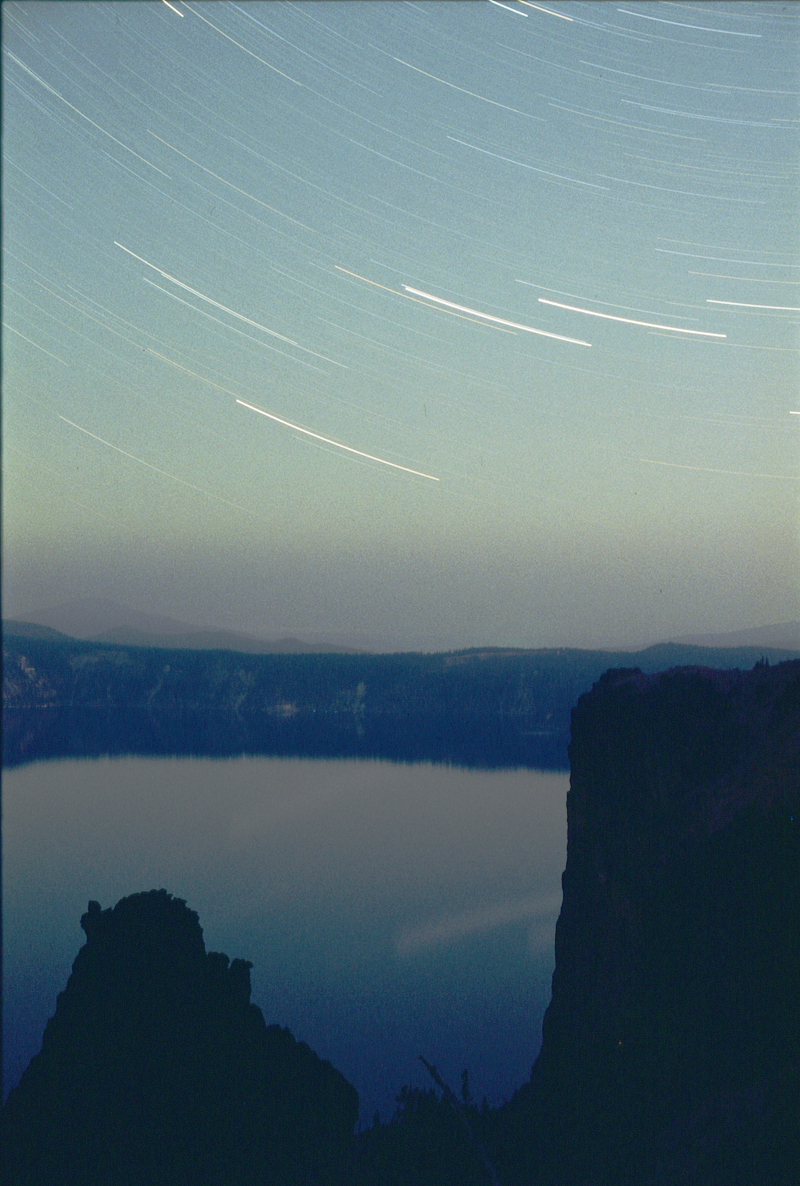
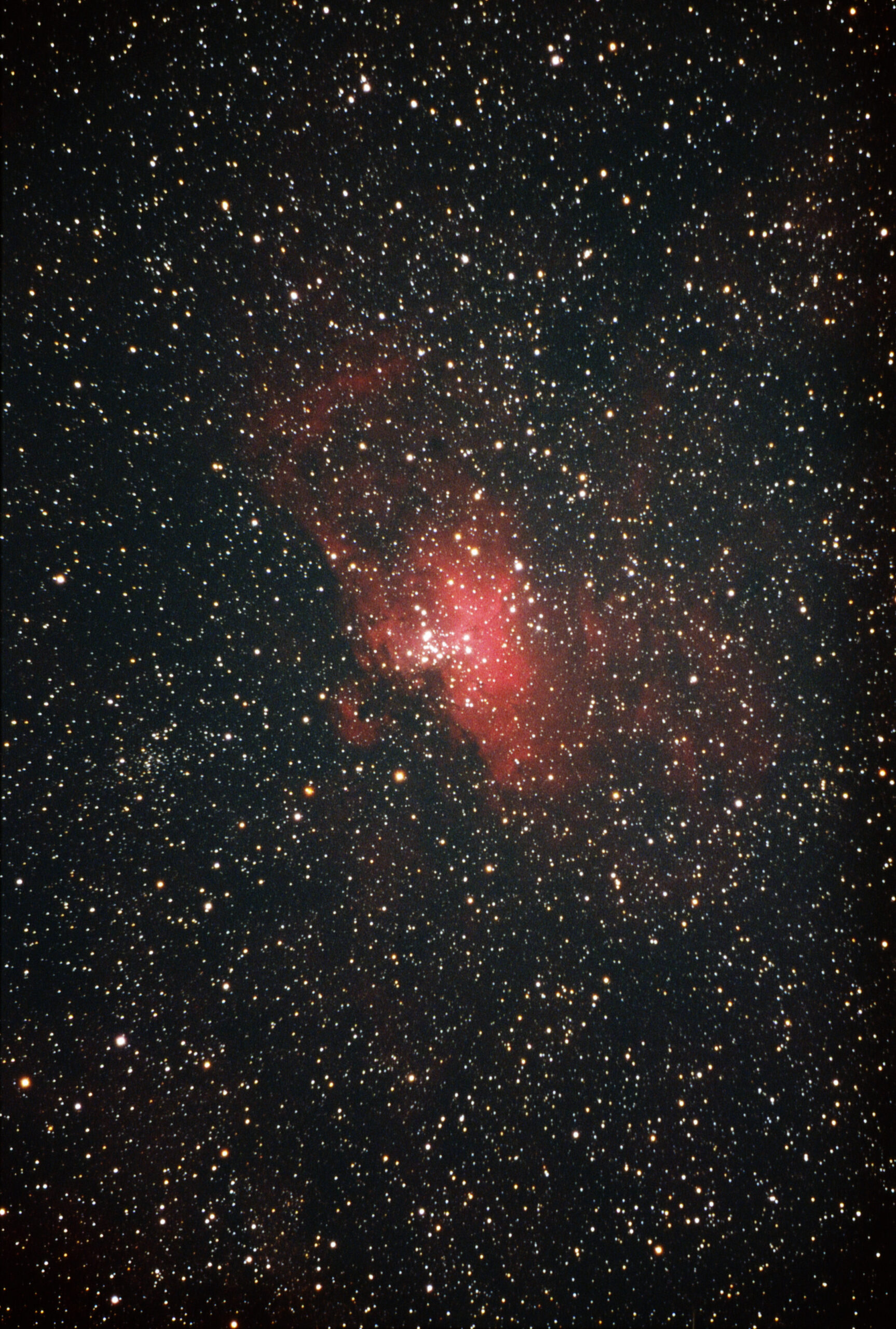
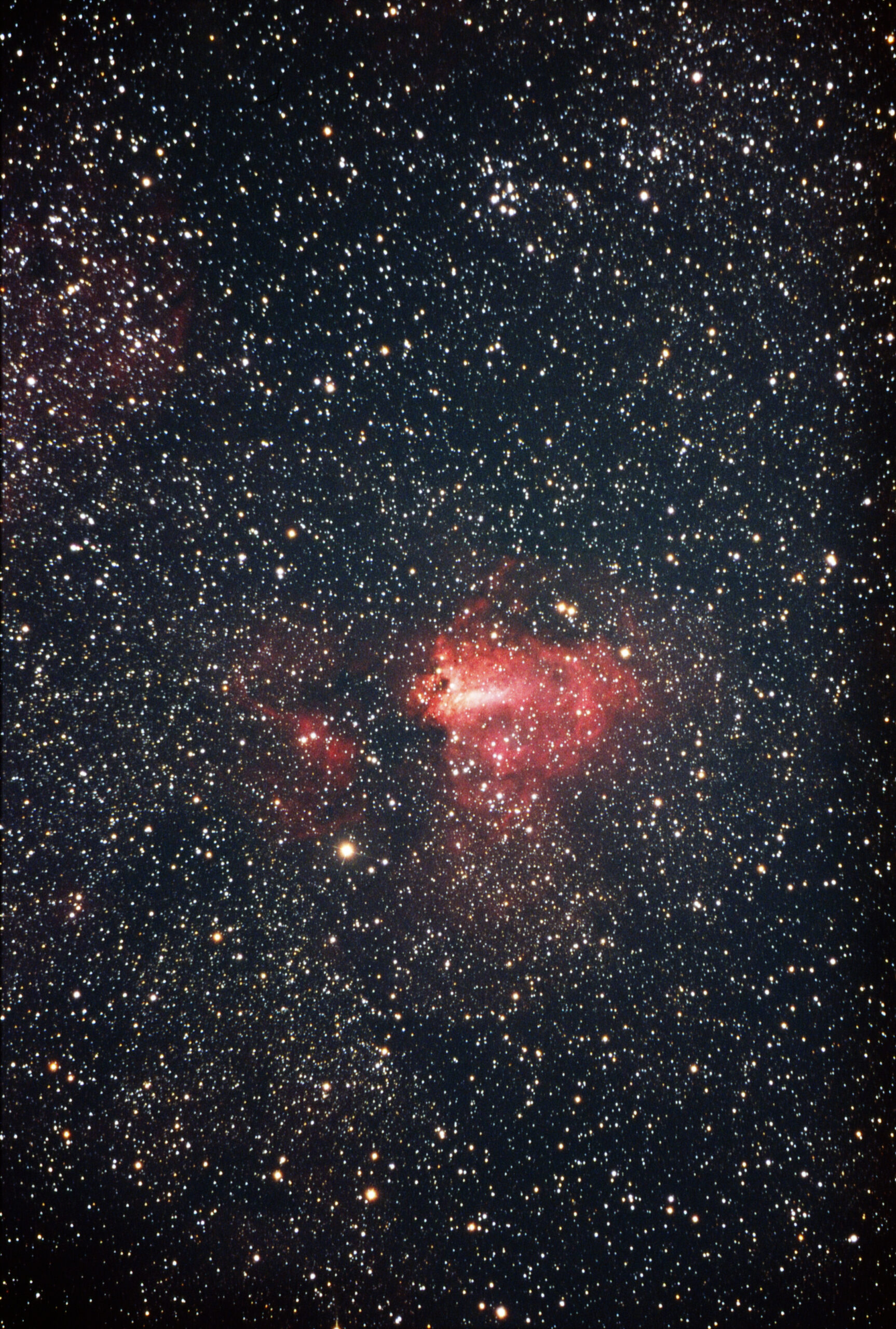
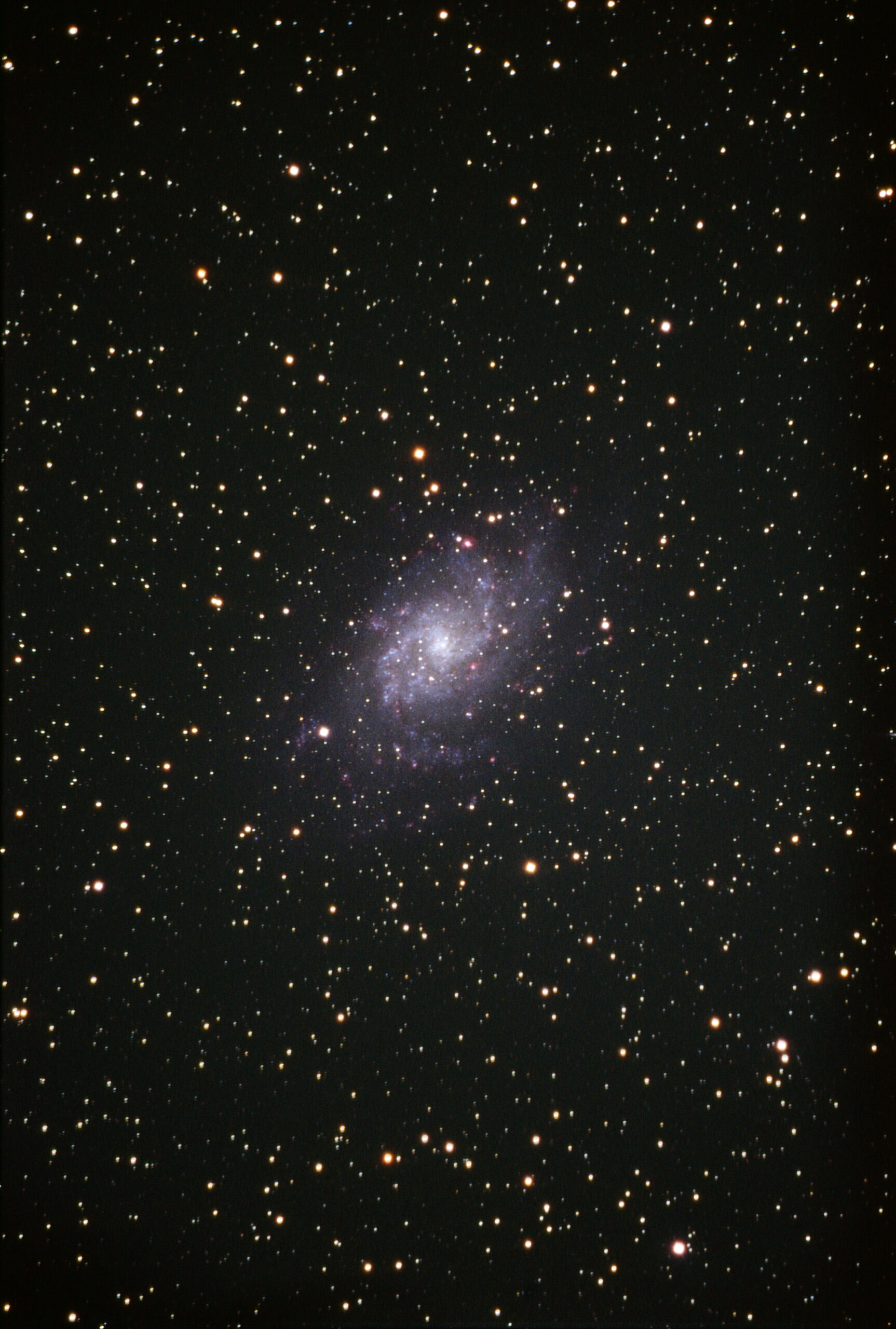
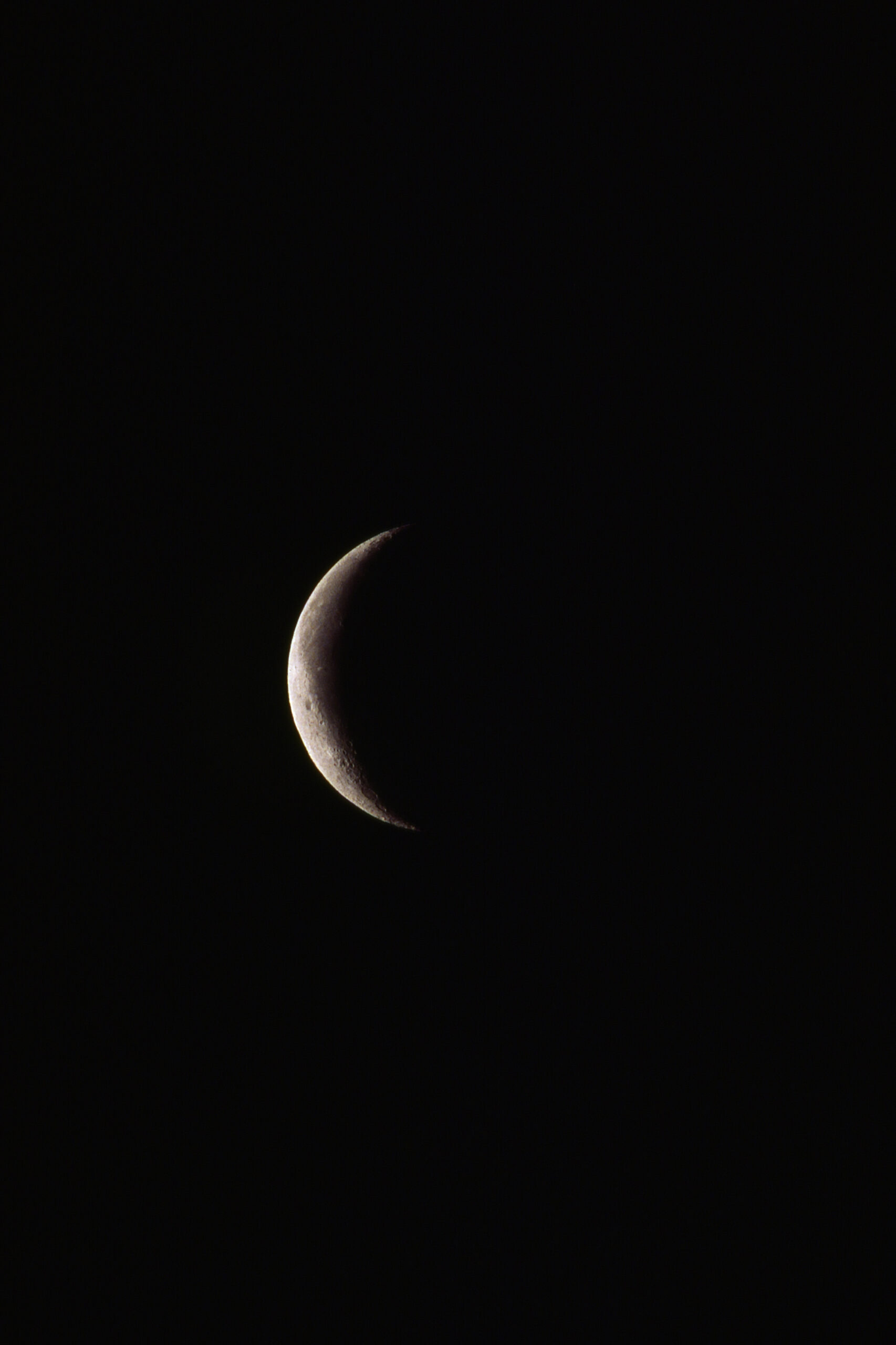
The images I captured through the telescope on that night at Sentinal Point. The red emission nebulas are M16 (Eagle) and M17 (Swan). The brilliant red appears only on the film; the view through the eyepiece shows only the brightest parts of the nebula and almost look like the shapes they are named. The galaxy is M33, the Triangulum Galaxy, another member of our local group of galaxies. The moon rose at 2:00 am and provided an easy target to cap the evening of astrophotography.
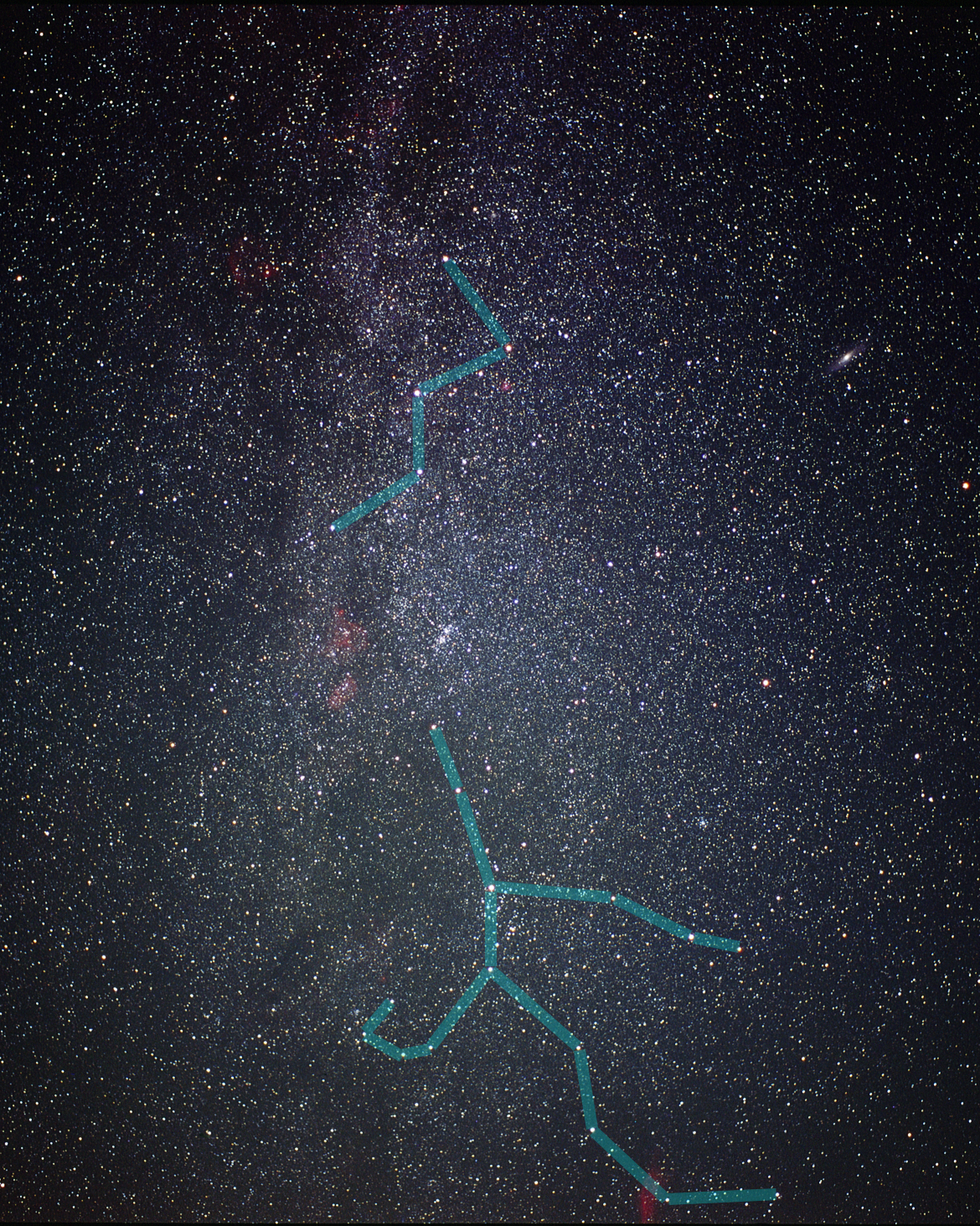


Pingback: 6.2 Crater Lake Rim Drive | Thor's Life-Notes
Pingback: 7 Trail to the Tetons | Thor's Life-Notes